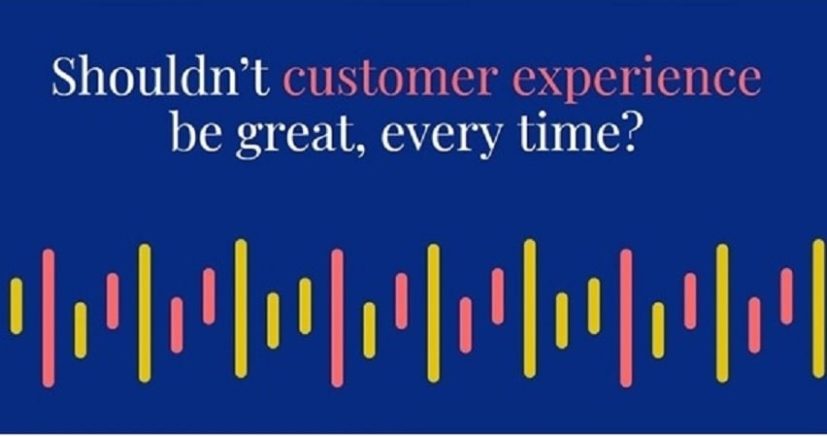Burnout vs bore out – both suck, and both are damaging customer experience – Ken Ume, Product Marketing Manager at Netcall
Since the pandemic, and amid the sudden shift to remote working, employee burnout has become a growing area of concern for businesses across all industries. Earlier this year, a study from CV Library found that 42% of UK workers were on the brink of burnout, with 68% citing work as the main factor. In fact, burnout, which the World Health Organisation defines as an ‘occupational phenomenon’ and ‘a syndrome conceptualised as resulting from chronic workplace stress that has not been successfully managed’, is expected to become an enduring legacy of COVID-19, and our response to it. More worryingly, it is expected to spur on the ‘great resignation’, with workers fed up with the challenges of remote work during a pandemic.

Whilst business leaders have been laser-focused on burnout and ways in which to support staff, its less famous sibling, ‘bore out’, has gone undetected in the background. While the two may sound similar, there are in fact crucially different. Burnout is a build-up of stress that leads to exhaustion or depletion, while bore out is an ongoing case of under-stimulation, often resulting in employees having a lack of engagement with or within their role.
Bore out occurs when employees are faced with high volumes of low-value tasks, low intellectual investment, disruptive processes, progression hurdles, siloed working and poor opportunities for collaboration. Frequently, the symptoms for both look the same: disaffected staff, poor performance, poor customer experiences and increased absenteeism. This compounds management’s ability to respond. Too often both conditions are treated the same, meaning management responds in the wrong way; for example, adding more exciting tasks to someone who is burnt out, or taking work away from someone struggling with bore out. It is essential to recognise and differentiate between the two so that appropriate action can be taken.
 The price of employee dissatisfaction
The price of employee dissatisfaction
One of the clearest environments to see the impact of both is the customer engagement centre setting. If either takes hold, performance and CX suffers. Employees becoming dissatisfied and even anxious about their place within the company leads to poor morale and possible resignations, which increases recruitment costs. Also, in a world where social media and review sites provide a ready platform for the disgruntled, no company wants to have to handle poor retention and the questions it raises.
If employees stay but feel fed up, they won’t go the extra mile for customers. They won’t volunteer more time and energy to their employer. Businesses have no choice but to tackle these issues head-on, or else risk damaging customer relationships. And with consumer expectations at an all-time high, how can companies solve the burnout/bore out challenge?
Banishing burnout and bore: See it, own it
Technology plays a key role in assisting your team in beating both burnout and bore out. But it must be combined with a shift in culture. Firstly, it’s important to re-energise a hunger for information. This is more than data. It’s the means to ensure everyone from frontline to management is informed. Avoiding data over – or under – load is where technology can help.
Customisable dashboards, data integrations and reports mean people only see what they need when they need or want it. Information also helps managers to better understand the different patterns to distinguish between burnout and bore out. With that insight, they can respond appropriately. After all, information is useless without the ability to do something about it.
The second culture shift is autonomy; the personal ability to introduce change. Everyone needs the ability to respond to new conditions. Technology can also help here to avoid potential chaos by, for example, understanding the real-world ripple effect of changing a rota or shift in call volumes. This can be daunting if you’re just relying on paper or your own wits. Automating processes across silos and systems allows change to be captured, updated, validated and deployed whenever needed. The right automation tools provide common ground for all parties to focus on problems rather than operational turf.
Automate it, understand it
These technology tools offer organisations the key to the third cultural change; intelligent automation. Intelligent automation provides the double benefit of reducing the volume of routine tasks and increasing the ability for staff to take ownership of addressing both burnout and bore out in the most effective way. It also ensures reduced errors, and helps encourage best practice become everyday practice.
To maximise the impact of all of these changes, one final culture shift is required: analytics. But it’s more than data and charting – it’s accessible information made available for everyone, used to underpin autonomy and validate the performance of automation. Crucially, it’s invaluable in helping to build a better understanding of the different journeys into and out of burnout and bore out.
Embracing culture and technology changes has the potential to give those at risk a much-needed sense of control and support to avoid the damage. By using well-understood technologies alongside newer ones, organisations can create responsive interfaces that stave off burnout and bore out. For example, teaming tools like robotic process automation (RPA), workforce management and smart interactive voice recognition (IVR), with natural language processing (NLP), machine learning, AI enabled chatbots, and low-code. Customer engagement tools that facilitate a better experience, therefore fulfilling the contact centre agent’s goals, will be crucial here too. By using such solutions and concentrating on timing, relevance and access within a responsive interface, businesses – and, more importantly, their staff – can reduce the strain of connecting to multiple systems. Working in this way creates the balance needed to avoid burnout and bore out.
 Happy employee, happy customer
Happy employee, happy customer
Ultimately, providing employees with a flexible interface gives them the information they need to satisfy customers, whether they’re working from the office or the kitchen table. Many of us have found that remote and flexible working helps to increase our work/life balance; something that should be encouraged for employees who are struggling with burnout or bore out.
Through transforming company culture, practices and processes, as well as embracing the full benefits of technology, businesses can help to improve employee job satisfaction and wellbeing. This enables better experiences for customers and staff alike – which ultimately leads to a stronger business overall. After all, happier staff means better service; and better service means customers will feel that they are being taken care of.
![]()
 Ken Ume is Product Marketing Manager at Netcall
Ken Ume is Product Marketing Manager at Netcall
Netcall is a leading provider of low-code and customer engagement solutions. A UK company quoted on the AIM market of the London Stock Exchange. By enabling customer-facing and IT talent to collaborate, Netcall takes the pain out of big change projects, helping businesses dramatically improve the customer experience, while lowering costs. Over 600 organisations in financial services, insurance, local government and healthcare use the Netcall Liberty platform to make life easier for the people they serve. Netcall aims to help organisations radically improve customer experience through collaborative CX.
For additional information on Netcall view their Company Profile




